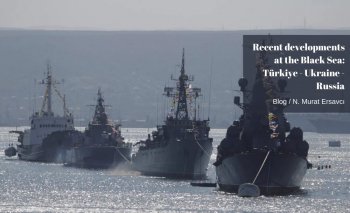Commentaries
Fatih Özatay, PhD - [Archive]
False interpretation 16/08/2009 - Viewed 1514 times
Probably the depth and duration of the latest crisis have depressed us so much that we have gone back by at least 15 years in the interpretation of simple production increases. We started to talk about the rise in industrial production in comparison to the month before to show that production has been increasing. For instance, it is announced that in July industrial production increased by 7.3 percent. This does not have any meaning at all. In fact, when compared to the year before, production in July was 9.7 percent lower.
Take any year where industrial production rose high annually. You will see that industrial production has fallen in January compared to the month before. There is no exception for this since 1998 for which new industrial production data are available: industrial production falls in each January as well as April. The only exception is April 2002 where industrial production has increased even only by 0.2 percent. On the other hand, production increases in Septembers. For instance in 2001 where economy has contracted by 5.7 percent, industrial production has increased by 4 percent in September compared to the month before.
Another example: Industrial production in Septembers from 2002 to 2006 is higher compared to the year before. There exists a rapid rise in production. For instance, in January 2003, production has increased by 15.4 percent compared to the same month a year before. However, if we interpreted industrial production back than as we do now, we would become highly depressed as we would see that production fell down by 8.6 percent compared to the month before!
We are not interested with the fluctuations in production arising from those rather than economic causes (shortage or excess of domestic or foreign demand, energy constraints preventing the utilization of installed capacity etc.). We want to evaluate the production figures net of these factors. Therefore, we either examine series net of seasonality and look for changes compared to the month before, or simply examine whether or not production has increased compared to the same month in the previous year.
However, in some periods, such evaluation is not sufficient. I provided a simple example in my last commentary, but I can repeat it: Assume that industrial sector only produces shirts. In 2008, you produced 100 shirts. In 2009, production fell to 80 shirts; so industrial production decreased by 20 percent. If you produce 84 shirts in 2010; industrial production grows by 5 percent. But level of production is still 16 percent lower compared to 2008!
The year 2010 will be just like this. If we do not face another external shock, the economy will grow by 4 percent due to mathematical purposes. But, this will not mean that things will stay on course. Of course it is better to grow due to mathematical reasons than not to contract. But, my point is different. Comparing the rise or decrease in production in a year following an (abnormal) year where production has increased or decreased rapidly masks some facts. In such cases, level of production as well as annual growth rates must be considered in the evaluation.
In short, in such periods, there is no need to be obsessed about the pace of growth. This, for instance can be a criterion: When do we achieve the level of production before the crisis? This production level, in terms of national income, refers to last financial year in the third quarter of 2008. And in terms of industrial production, the period corresponds to July 2008 where production peaked. In fact, it is necessary to make a more complicated calculation. For instance, the economy grew in the second and third quarter of 2008; however, national income rose quite below potential. We should depart from the question 'If we used our potential, what would be the level of production' and interpret following natural income or production figures accordingly.
But, there is no need to complicate things further. The analysis in the paragraph above also serves the purpose.
This commentary was published in Radikal daily on 16.08.2009














